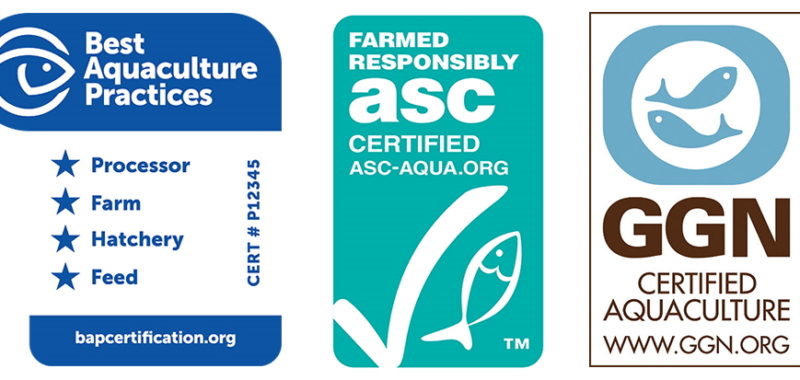“Enjoying Shrimp: A Guide to Healthy, Sustainable Choices” begins with the benefits shrimp brings to the table. Offering a good source of lean protein, vitamins, and minerals. Shrimp can play a role in a balanced diet. It’s packed with Vitamin B12, iron, zinc, and selenium. Shrimp also provides heart-healthy omega-3 fatty acids.
Shrimp does indeed contain cholesterol – about 189 milligrams in a 3.5-ounce (100-gram) serving. This is 85% of the daily value of cholesterol recommended by the U.S. Food and Drug Administration. This high cholesterol content might lead some to believe that shrimp is a no-go for those concerned about their heart health.
However, it’s important to note that dietary cholesterol (the cholesterol found in food) does not affect blood cholesterol levels as much as once thought. The bigger influences on your cholesterol levels are trans fats and saturated fats, which can increase your “bad” LDL cholesterol. Shrimp is low in both of these types of fats. Moreover, shrimp contains other components that are good for heart health.
Moderation is Key
Remember, moderation is crucial when incorporating shrimp into your diet. Balance is achieved by not overconsuming one food or nutrient. Therefore, including a variety of foods is essential. Dietary guidelines recommend consuming 3.5 ounces of cooked seafood, like shrimp, twice a week.
Popular Shrimp Varieties
From the various species of shrimp, white shrimp, tiger shrimp, pink shrimp, brown shrimp, and cold-water shrimp are commonly consumed worldwide. Their taste and texture vary, suiting different recipes and personal preferences. Here’s a more detailed breakdown:
- White Shrimp: These are the most commonly consumed shrimp in the United States. They are large, have a sweet flavor, and are often used in a variety of dishes.
- Tiger Shrimp: These are one of the largest types of shrimp and they are named for their striped shells. They have a firm texture and a mild, sweet flavor. They are popular in many Asian cuisines.
- Pink Shrimp: These shrimp have a sweet, tender flavor and are often used in salads or served chilled. They get their name from their color, which turns bright pink when they are cooked.
- Brown Shrimp: These have a more robust flavor than some other types of shrimp, which makes them popular in dishes with strong flavors, like gumbo.
- Cold-Water Shrimp: These shrimp are smaller and are often used in salads, pasta, and stir-fry dishes. They are caught in colder waters, like in the North Atlantic and around the Pacific Northwest.
Sustainability Matters
An important consideration is sourcing sustainably caught or farmed shrimp. Practices ensuring the long-term survival of harvested populations, protecting oceanic ecosystems, and maintaining fair working conditions are prioritized in sustainable shrimp production. This is important not only with wild caught shrimp but farmed shrimp as well. Certifications like the Marine Stewardship Council (MSC) or the Aquaculture Stewardship Council (ASC) can guide consumers. Look for these logos:

Healthiest Ways to Eat Shrimp
Grilled, steamed, sautéed, or baked shrimp make healthy eating easy. Cooking methods that minimize unhealthy fats and added salt are the most beneficial. Remember to cook shrimp to a safe internal temperature, typically 145°F.
- Grilling or Broiling: These methods don’t require added fat, and they can give the shrimp a delicious flavor. Skewered shrimp or shrimp kabobs are popular choices for grilling.
- Steaming or Boiling: These are simple, healthy cooking methods. Boiled shrimp is often used in salads, and steamed shrimp can be a great addition to stir-fries or served with a side of vegetables.
- Sauteing: This method can also be healthy if you use a small amount of heart-healthy oil like olive oil. A shrimp stir-fry with lots of colorful vegetables can be a very nutritious meal.
- Baking: Baked shrimp is another healthy option. Baking allows for the flavor to be enhanced without the need for additional fats. You can bake shrimp with herbs and spices for an easy, healthy meal.
Avoid methods that require a lot of added fat, such as deep frying, or dishes that contain a lot of butter or creamy sauces, as these can add a lot of extra calories and unhealthy fats.
Delicious and Easy Garlic Butter Shrimp Pasta
Refreezing Shrimp
Thawed shrimp can be safely refrozen, given proper handling. If thawed in the refrigerator and not left at room temperature for more than two hours, it can be refrozen without cooking. When thawed in cold water or a microwave, cooking before refreezing is recommended.
Shrimp is a versatile, delicious addition to any meal plan. It provides nutritional benefits when consumed in moderation. And when sourced sustainably, it contributes to the health of our oceans. Remember, the best shrimp dishes start with the best shrimp, and my friend’s fish market is a perfect place to start.

